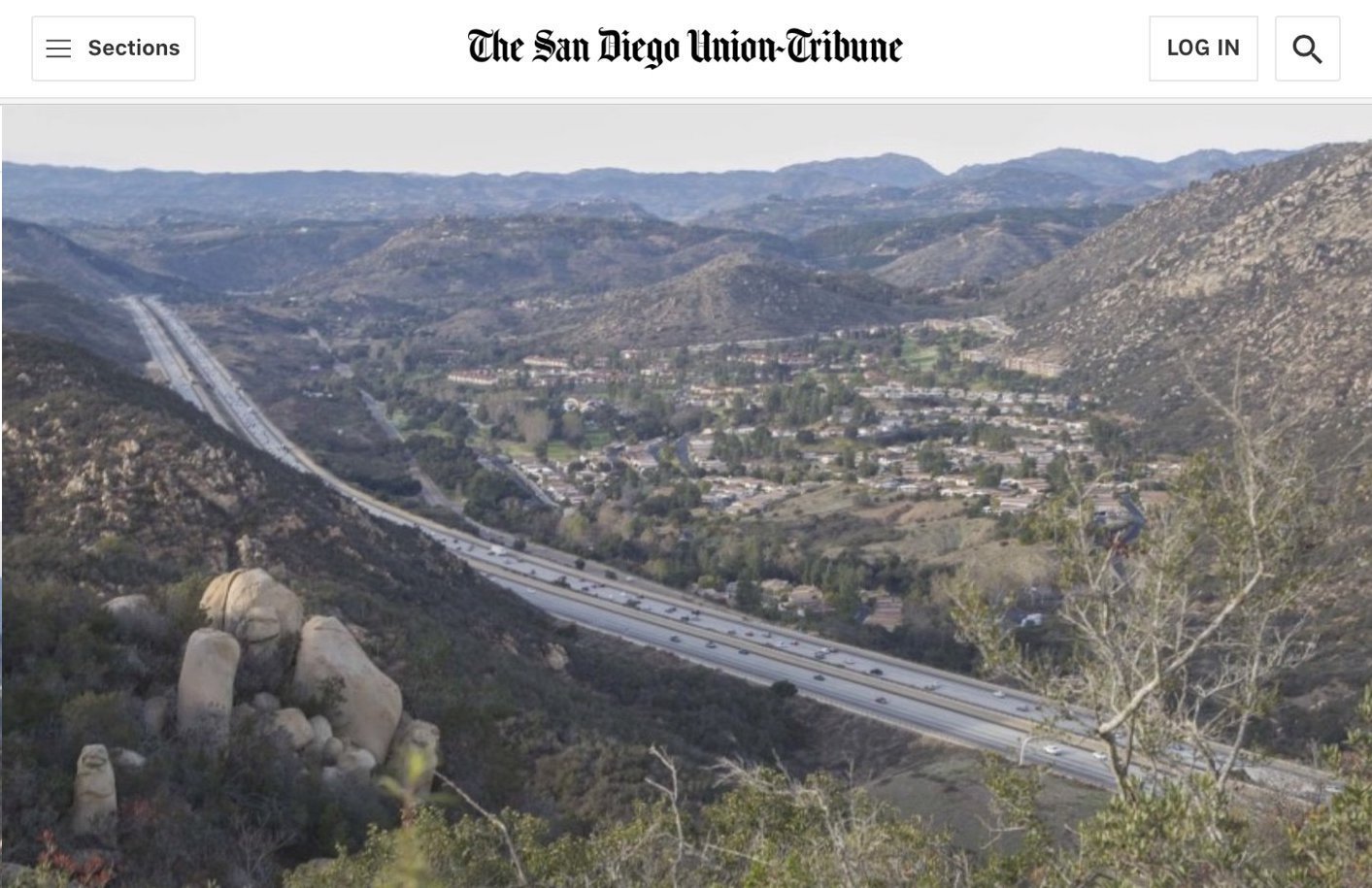
Share post via this link: permalink.
The lack of transparency and potential conflicts of interest in the development of SANDAGs latest regional growth forecast (RGF) has important implications to the future planning of the region. SANDAG’s committee to develop the Regional Growth Forecast spent almost a year developing a reasonably accurate housing forecast which took into account a reduced population and jobs prediction for 2050. However, immediately after presenting these initial findings, they convened a second “expert review panel” that included two building industry consultants from the same firm – known critics of the county general plan for smart growth. Following that meeting, the housing forecast was revised upwards by close to 330,000 units, exceeding all the general plan capacities of the region by using erroneous demographic assumptions discredited by demographic experts. Grow the San Diego Way has published a detailed investigative white paper outlining how this happened (online, interactive version here and printable PDF download here). For a summary of the paper, read further.
2018 preliminary regional forecast (Series 14)
SANDAG’s regional growth forecast is updated every four years and uses, as inputs, official jobs and population projections provided by the State of California’s Department of Finance (DOF), whose numbers are required by law to be used in regional planning efforts.
The forecast is important in many of our region’s most important planning efforts as it is used to predict how many people, jobs and housing there will be in the region and how that might affect everything from transportation, housing, infrastructure and the costs and revenues associated with all of them. It provides the main input into SANDAG’s “San Diego Forward” 2021 Regional Plan which is the vision for how San Diego’s transportation network should grow into the future.
fewer people and fewer jobs than previously forecast which should mean fewer units will be built – instead, the housing forecast jumped almost 60%, which raised questions.
In 2018, the DOF revised its population and jobs forecasts for 2050, downward due to lower fertility rates and the slowest population growth on record in the state of California. Fewer people and fewer jobs would predict fewer housing units. Despite the lower jobs and population number, SANDAG’s new housing forecast inexplicably jumped 56% compared to the previous forecast. Members of the planning community were understandably perplexed.
Grow the San Diego Way, determined to get to the bottom of this, spent close to 6 months reviewing meeting minutes, audio and interviewing dozens of experts, including members of the expert review panels, officials at the Department of Finance and SANDAG that were involved in shaping this preliminary forecast. In addition, Public Records Act requests helped uncover an astounding lack of transparency and possible manipulation that seemed to be designed to create a narrative that the combined regional general plans for housing have insufficient housing capacity to meet the housing need for 2050.
This narrative could be easily spun to make the case for undoing smart-growth, anti-sprawl plans enacted by the region’s general plans. In particular it could be used to undermine the county’s smart-growth-oriented general plans which encourages infill development while eschewing unsustainable sprawl projects in the fire-prone, rural areas of the county. And indeed, it appeared to have been used to do just that by two building industry consultants who were involved in shaping the forecast.
initial development of the housing forecast was logical and tracked with earlier forecasts, but then something changed
Grow the San Diego Way reviewed the process in depth and found that, following a year of forecast development (including four public committee hearings and input from a 12 person expert review panel in March 2017) SANDAG had presented preliminary numbers that appeared to be consistent with expectations and similar to the earlier forecast. It forecasted that the San Diego region would have approximately 1.375 to 1.45 million housing units by 2050.1

After a year of progress on the new forecast, a new expert panel was convened and the original assumptions went out the window.
Only a week following the presentation of their initial stab at the forecast, SANDAG convened a smaller, five-person panel of experts – this time including two building industry consultants from the same firm who are on record disparaging housing plans of the region. Shortly after that panel convened, the assumptions and thus the housing forecast changed dramatically. The resulting change inflated the housing forecast with a flawed methodology not supported by methodological rigor. The housing number jumped by more than 350,000 units to 1.7 million.

the inflated forecast relied on a demographic assumption (2.49 persons-per-household) that is not supported by sound science.
The new “improved” figure relied on a demographic assumption that is simply not supported by demographic science, namely that by 2050, the average San Diego household would have an unprecedented, historically low household size or “persons per household” (PPH) of 2.49. That assumption was never presented to either of the expert panels, according to PRA requests and interviews with a panelist who attended both panels. And in fact, during the questionable second panel, there was discussion that household sizes were actually growing in San Diego, not getting smaller, according to Public Records Act requests by Grow the San Diego Way.


the lone demographer on the panel was not consulted on this highly technical, demographic assumption.
The panelist with the most expertise in demography, professional demographer, Ethan Sharygin, was not asked to provide input on this technical demographic assumption (the historically unprecedented 2.49 persons per household) either during the panels or after. Mr. Sharygin is one of the foremost demographic experts in the state and works for the State of California’s Department of Finance in the demographics research unit; it would stand to reason his input on demographic assumptions would be crucial. He issued the following statement:
- “[members of the panel] were not provided information about the persons per household assumption that was used in the Series 14 projections at either of their convenings. During 2017 and early 2018, reviewers were presented with a different method of calculation which held constant household headship rates by age, sex, and race/ethnicity, and therefore varied based on the county’s demographic change. Incredibly, the decision to change the persons per household forecast was not made with the knowledge or endorsement of the demographers on the panel.“
When Mr. Sharygin was presented with these findings by Grow the San Diego Way, he rejected the methodology as he had not been given a chance to weigh in on it and subsequently asked SANDAG to have his name removed in association with that panel to protect his reputation.

Flawed nationwide regression analysis led to an unprecedented and unnaturally low PPH for San Diego County (2.49).
The demographic variable used to create the inflated forecast was based on a discredited calculation correlating median age with persons per household using a demographically unrepresentative, nationwide sample of approximately 3,100 US counties.2. The nationwide regression suggested that (in 2010) U.S. counties that have a median age of 40 are likely to have approximately 2.49 persons per household (based on a linear trend line). Therefore, the implication is that, in 2050, when San Diego’s median age is 40, it too will have 2.49 persons per household.
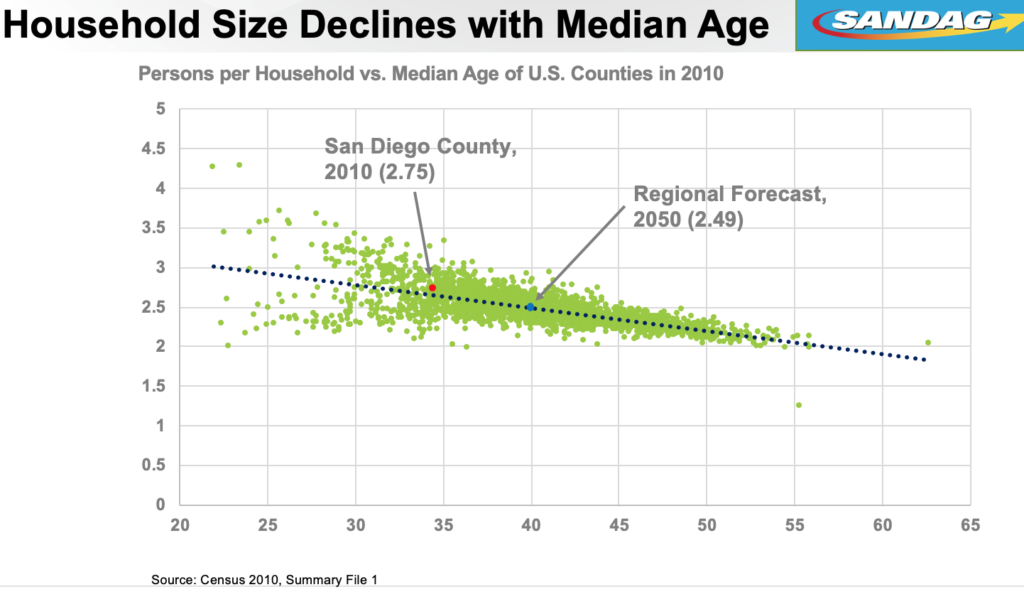
numerous demographers interviewed noted that this methodology had numerous serious fatal flaws
This analysis was rejected by at least three professional demographers interviewed by Grow the San Diego Way, who were shown the methodology and the nationwide regression chart shown above.
Firstly, using a nationwide sample of counties to attempt to correlate household size based on median age is methodologically unsound for numerous reasons. In particular, the vastly different demographics of California compared to the rest of the nation make this correlation highly inaccurate. For example, California has more than twice as many Hispanics as the rest of the nation, and fewer Whites. Hispanics are more likely to live in multigenerational households and Census data shows that Hispanic households are more than a third larger than non Hispanic households (3.25 persons per household versus 2.43).3. In the white paper, Grow the San Diego Way recreates this analysis with interactive charts using both a nationwide counties cluster chart (SANDAG’s approach) and a California-only counties model. The “California-only” model yields a much higher persons per household (due to being among the most diverse states in the nation), mostly erasing any increase in housing that would result. Nonetheless, even using California counties to do this regression is flawed.
There was also a consensus by demographers that it is not possible to predict PPH so far in advance; median age doesn’t accurately predict PPH (for technical reasons which are explained in detail in the white paper). A county with a median age of 40 can vary widely with regards to its persons-per-household because it depends less on the median age of the population, and more on the distribution of those ages. The two counties shown in the below charts show how misleading median age can be when it comes to household size; both counties have a median age of 40 (the projected median age of San Diego County in 2050), but their household size (PPH) are vastly different (2.34 vs. 2.82). Having more people of childbearing age (more persons per household) in a population can offset the older population (fewer persons per household). Simply having an older population on average doesn’t necessarily mean household sizes will be smaller. The white paper delves into this flaw and another more technical flaw, in greater detail.
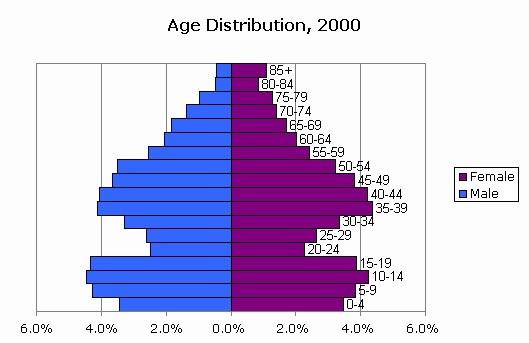
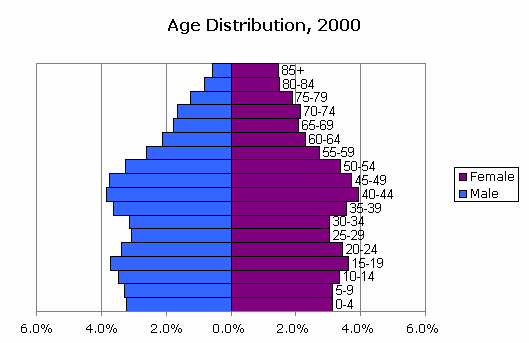
One of the demographers interviewed, Walter Schwarm, the head of the Department of Finance Demographic Research Unit, noted that even the state of California’s top demographers would not attempt to predict PPH that far in advance and there is absolutely no evidence that would predict San Diego’s PPH would be a historically low 2.49 in 2050.
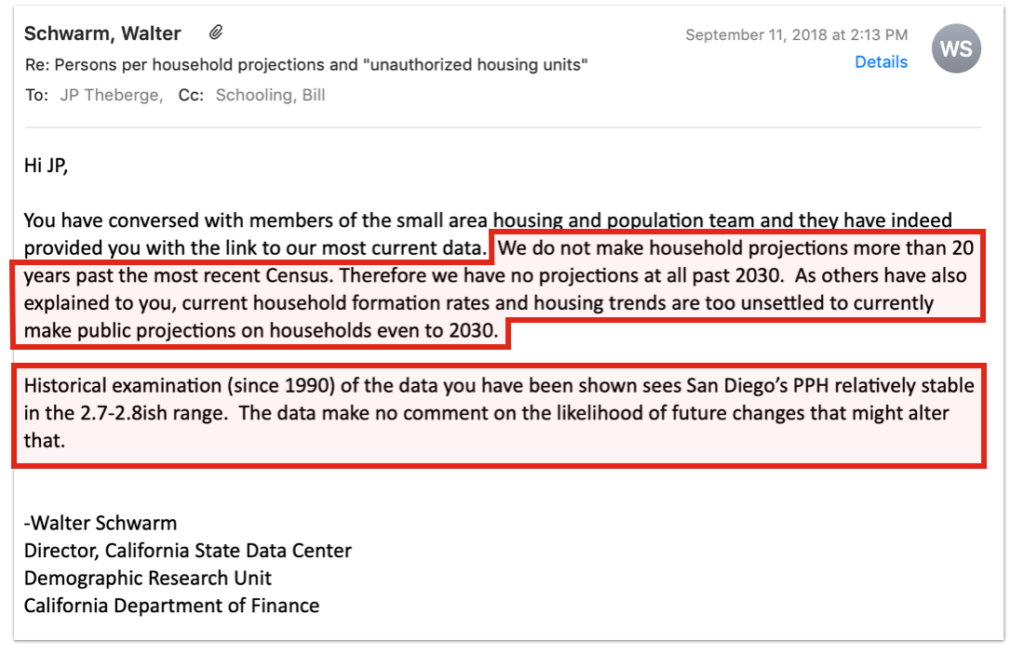
the demographically-based assumption was not developed with the help of any demographers.
As referenced above, it doesn’t appear that any demographers were consulted on the development of what is essentially a demographic assumption. PowerPoint file metadata from a presentation featuring Ray Major on July 19, 2018 at the North County Housing Summit appear to indicate that it was Mr. Major, the lead economist responsible for the forecast, who developed the nationwide regression analysis showing all US counties by median age and persons per household. Incidentally, Mr. Moeder (one of the expert review panel members and building industry consultant) was also in attendance. Economists are not demographers and a leap such as this should have counted on the expertise of a demographer to validate the assumptions being made. What is unusual is that in this presentation, the chart showed a different PPH (2.56) than previously shown which appears to have been adjusted manually because a linear regression would yield 2.49 (the earlier number). The assumptions seem to have been modified several times after the February meeting, even though the end result (1.7 million units) seems to remain consistent. Grow the San Diego Way documents the timeline of how the assumptions seemed to arbitrarily change, in more detail in the white paper.
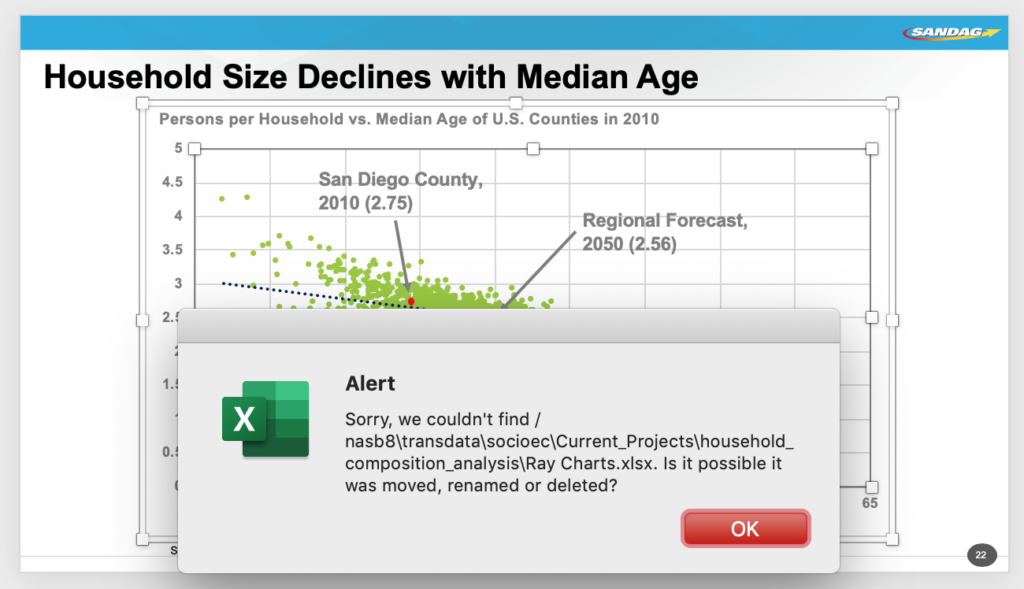
flawed methods leads to flawed conclusions
The implications of this inflated housing forecast led to a flawed conclusion that even if the region were to fully build out every jurisdiction in San Diego County to its maximum general plan housing element capacity, we would still not have enough housing built by 2050. Voice of San Diego reported on this4 which is what caused Grow the San Diego Way to dig deeper.
flawed conclusions are being used by special interests to manipulate decision-makers and the public.
The two building industry consultants present on the second panel (from the firm London Moeder Advisors) then, shortly thereafter, issued a report to the City of Santee (at a cost of $40,000)5 that used the flawed preliminary Series 14 forecast to make the case that a citizen’s initiative would be economically ruinous to the city if it were to pass 6. Without the elevated housing forecast, they would have had a much more difficult time coming to this conclusion. There is no evidence that Mr. London or Mr. Moeder were involved in changing the PPH assumptions, but the timing of the change, their repeated use of the new forecast and their presence on the panel raises questions.
an inaccurate forecast could increase costs unnecessarily to taxpayers and ratepayers as public entities make long-range plans
Already, the County Water Authority appears to be looking towards this preliminary Series 14 forecast as it develops its long range planning goals7. This could have serious implications as the water authority will need to account for increased water demand in 2050 based on a housing forecast which will likely not materialize, thus wasting ratepayer and taxpayer resources.

in conclusion
The committee charged with developing the RGF seems to have switched horses midstream which drastically changed the forecast. The methodology that inflated the forecast, was fundamentally incorrect, as shown in great detail in the white paper. And it appears to have occurred immediately after the convening of a second, smaller panel that included two building industry consultants known for their disdain for the county’s general plan for smart growth in the region. The new number could be used to undermine those general plans, or, as has already been done by those same consultants, to undermine citizen’s initiatives intended to preserve the general plan.
We should strive for the best possible data that is not driven by the agenda of any one industry or ideology. Data that is erroneous or, in the worst case scenario, manipulated, reduces the credibility of the public entity that does not take steps to correct it.
You can email Hasan Ikhrata, Executive Director of SANDAG, and ask him to scrap this iteration of the Regional Growth Forecast and start over. Or at least go back to February 8th of 2018, before the fatal “expert review panel” drastically changed the methodology to potentially serve special interests at the expense of the public.

JOIN OUR MAILING LIST TO BE KEPT UP TO DATE ON THE LATEST IN SAN DIEGO LAND USE AND HOUSING ANALYSIS
Links and documents
- Regional Planning Technical Working Group, February 8, 2018, Item 3, audio here
- March 26, 2018, SANDAG Regional Planning Technical Working Group, Agenda Item 3
- US Census Bureau, CPS 2017
- March 27, 2018, Voice of San Diego: San Diego County Will Be Short of Housing Even If Everything Planned Gets Built
- September 7, 2018, London Moeder Advisors, Section 9212 Report for the City of Santee
- September 10, 2018, San Diego Union-Tribune, Report: Financial fallout in Santee if 2020 initiative passes
- September 19, 2018, San Diego County Water Authority, Water Planning Committee: Professional service contract with Hazen and Sawyer for the Long Range Demand Forecast Update Project, p. 152 and 153


